Where palm trees are found in the United States
Palm trees are remarkable botanical wonders that represent more than just tropical scenery. These ancient plants belong to the Arecaceae family, with origins dating back approximately 100 million years (National Center for Biotechnology Information). Characterized by their unique growth pattern, palms feature a single unbranched stem and a crown of large leaves called fronds, which set them apart from traditional tree structures.
The map below illustrates the density of native palm species in the United States. As a side note, while palm trees can grow outside of this area, they will not be found in the wild outside of this zone.
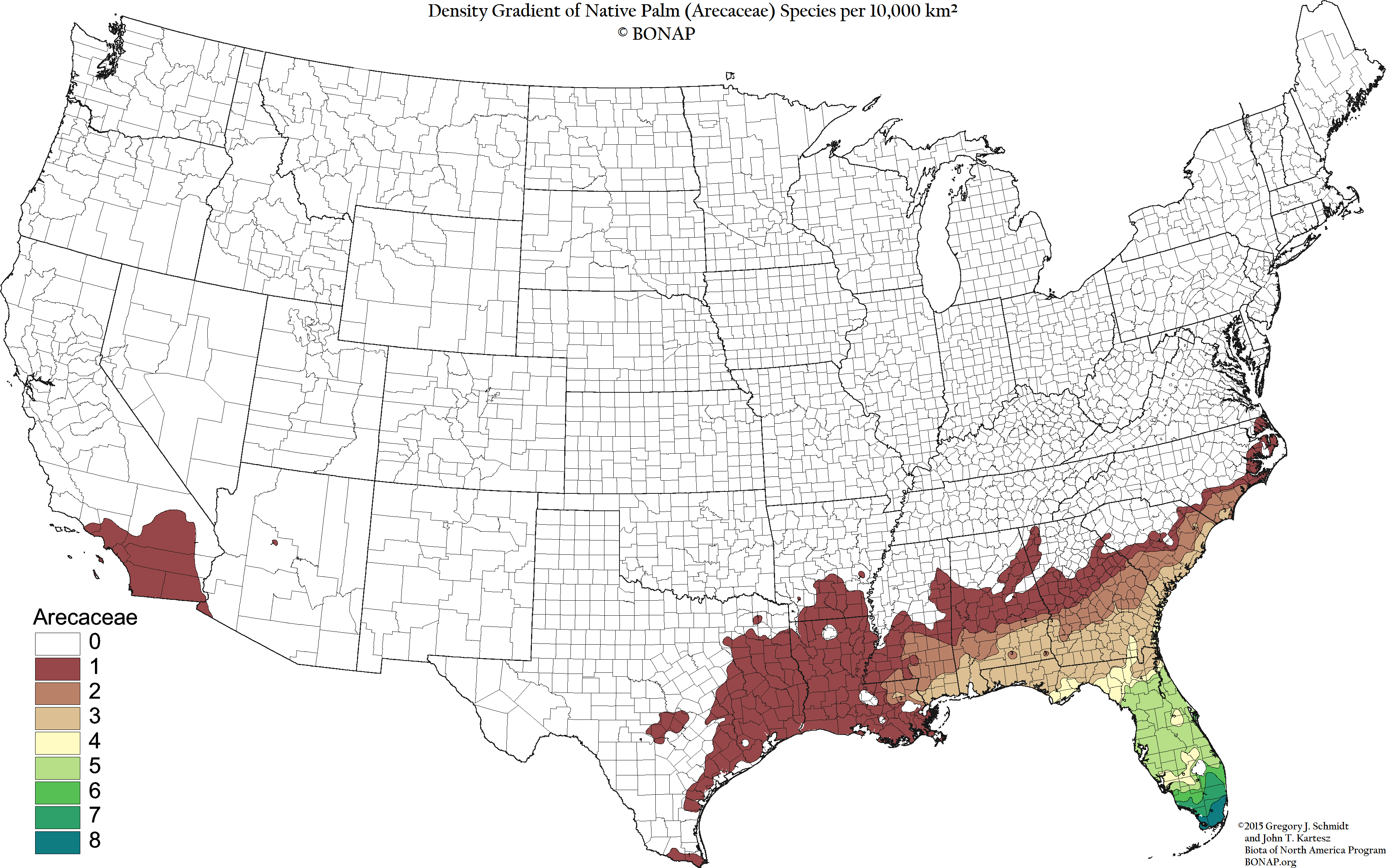
Interesting Fact: Despite their tree-like appearance, palms are more closely related to grasses than traditional woody trees, belonging to the monocot plant group.
In the United States, palm trees are not just decorative elements, but integral components of complex ecosystems. Fourteen species of palms, belonging to 9 genera, are native to the United States. Only one (Washingtonia filifer) occurs in the West; the others are naturally distributed in the southeastern and southern states — from North Carolina through Florida and the Gulf Coast into Texas and as far inland as Arkansas and southeastern Oklahoma. Some of them cover extensive areas. The greatest number of species occurs in Florida. The total of 14 is a relatively large representation since the southern tip of Florida is the only essentially tropical portion of the United States.
In addition, Two Old World palms, the coconut (Cocos nucifera), and the date (Phoenix dactylifera) have become naturalized; that is, in many areas where they have escaped from cultivation, the climate and soil have proved so suitable for their growth that they appear to be native.
Native palms:
Coccothrinax argentata (Jacq.) Bailey (Florida silver palm)
Paurotis wrightii (Griseb. & Wendl.) Britton (Paurotis palm)
Pseudophoenix sargentii Wendl (Florida cherry palm)
Rhapidophyllum hystrix (Pursh) H.Wendl. & Drude
Roystonea elata (Bartr.) F. Harper (Needle palm)
Sabal etonia Swingle (Scrub palmetto)
Sabal louisiana (Darby) Bomhard (Louisiana palmetto )
Sabal minor (Jacq.) Pers (Dwarf palmetto)
Sabal palmetto (Walt.) Lodd (Cabbage-palm)
Sabal texana (O. F. Cook) Becc (Rio Grande palmetto)
Serenoa repens (Bartr.) Small (Saw palmetto)
Thrinax microcarpa Sargent (Silvertop palmetto)
Thrinax parviflora Swartz (Broom palm)
Washingtonia filifera (Linden) Wendl (Fan palm)
Naturalized palms:
Cocos nucifera Linnaeus (Coconut tree)
Phoenix dactylifera Linnaeus (Date palm)
Nine of the U.S. species are full-sized trees; three of the others are arborescent under certain conditions. The California washingtonia, cabbage palmetto, Texas palmetto, and Florida royal palm are probably the best-known of our native tree palms. The remaining five, including two kinds of thatch palm, Florida silver palm, paurotis, and Florida cherry palm, are much less familiar, occurring in southern Florida or the Florida Keys. But two species—the widely distributed dwarf palmetto and the needle palm of restricted range — are not treelike.
It should also be noted that the southeastern United States is characterized by high levels of species diversity of other tree species as well, not just palm trees. The map below shows a number of all native tree species in the United States.
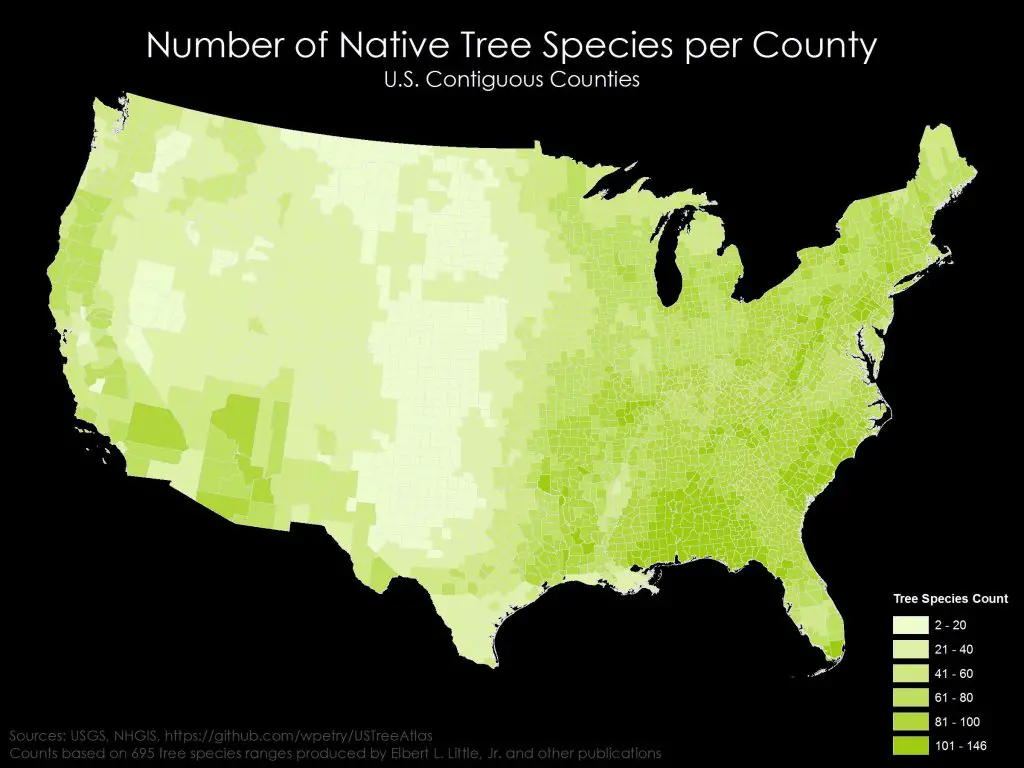
While the maps above tell a story of botanical diversity, the map below reveals an interesting geographical linguistic phenomenon, highlighting place names that incorporate the word “Palms” across the United States. This distribution often reflects both cultural heritage and the ecological presence of palm tree species in different regions.
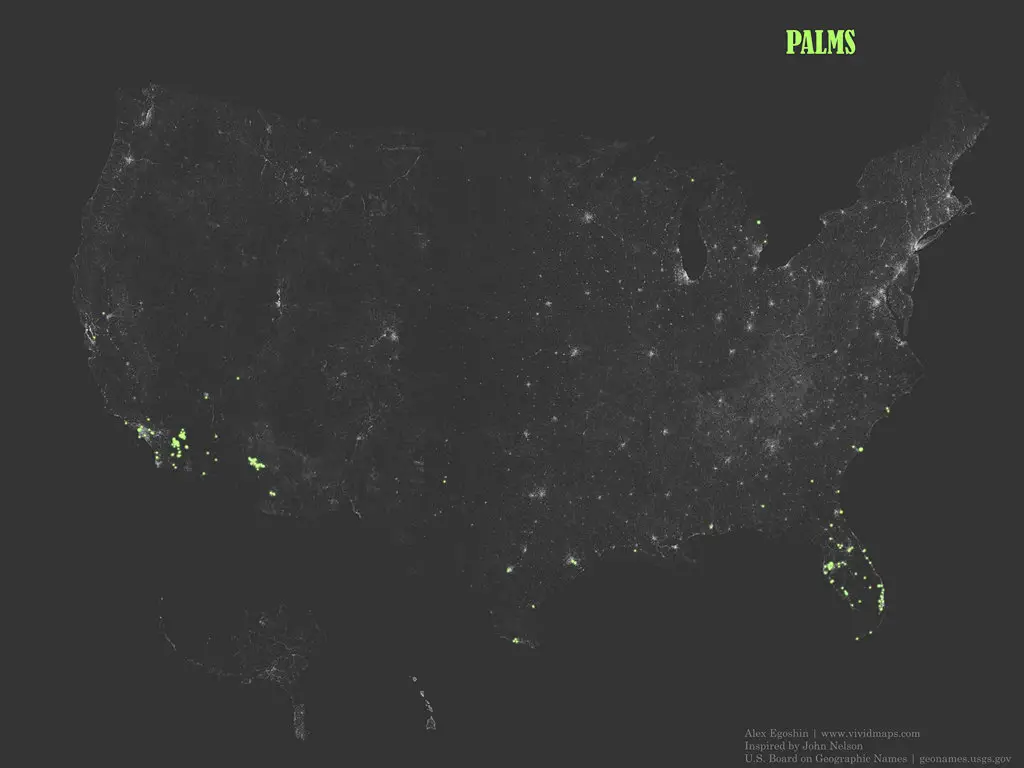
Want to learn more about growing palm trees, then have a look at the following books available on Amazon about palms:
- Growing Palm Trees: In Hawaii And Other Tropical Climates
- The Encyclopedia of Cultivated Palms
- The Palm Trees for Landscaping Guide: The Essential Guide to Selecting, Growing and Propagating Palms Trees
- Your Ultimate Palm Tree Handbook
We’d love to hear about your experiences with palm trees! Have you encountered these fascinating plants in their natural habitats? Share your stories, questions, and observations in the comments below.
Related post:
– The diversity of trees in the US mapped
– Native Oak Tree Ranges in the United States

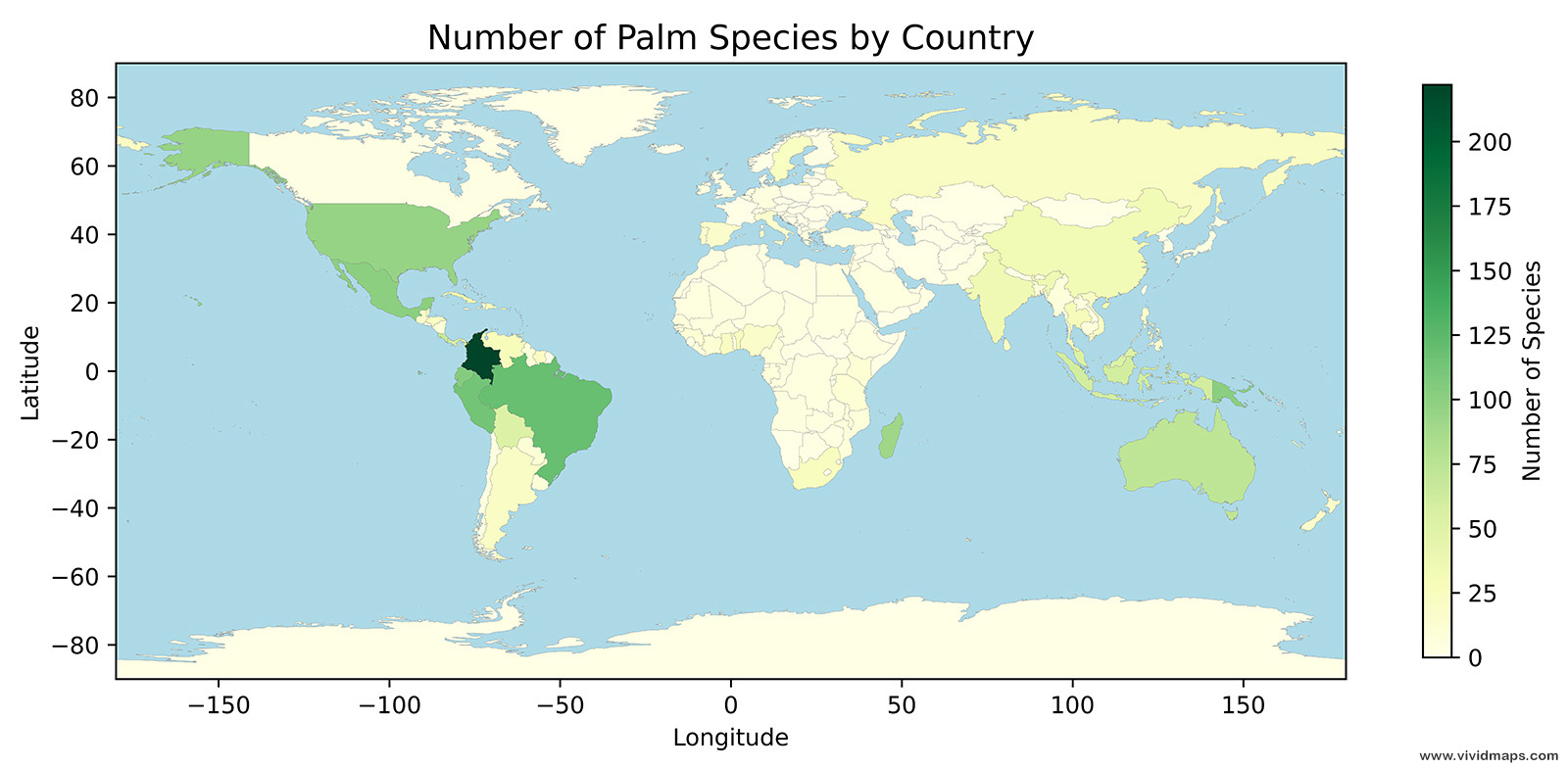
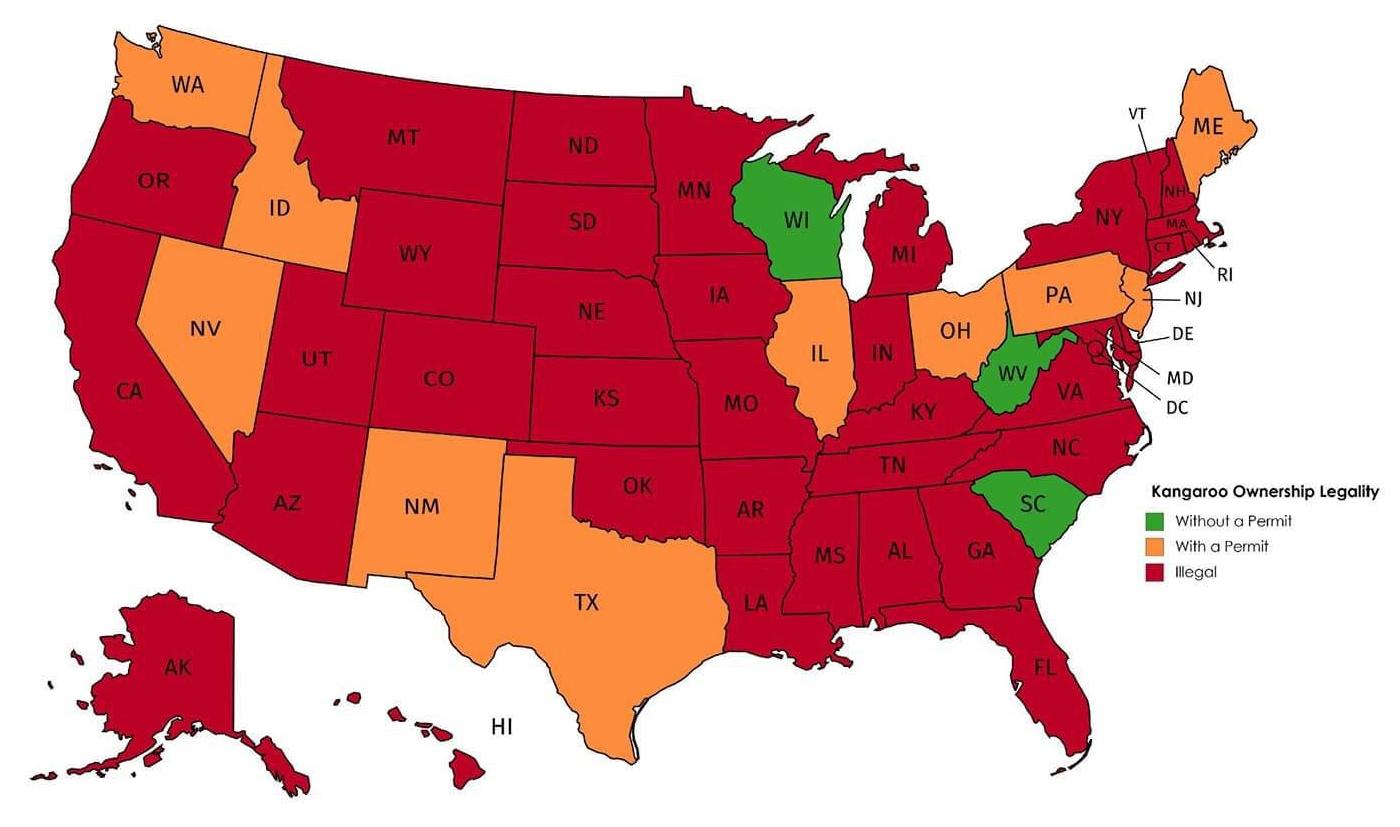
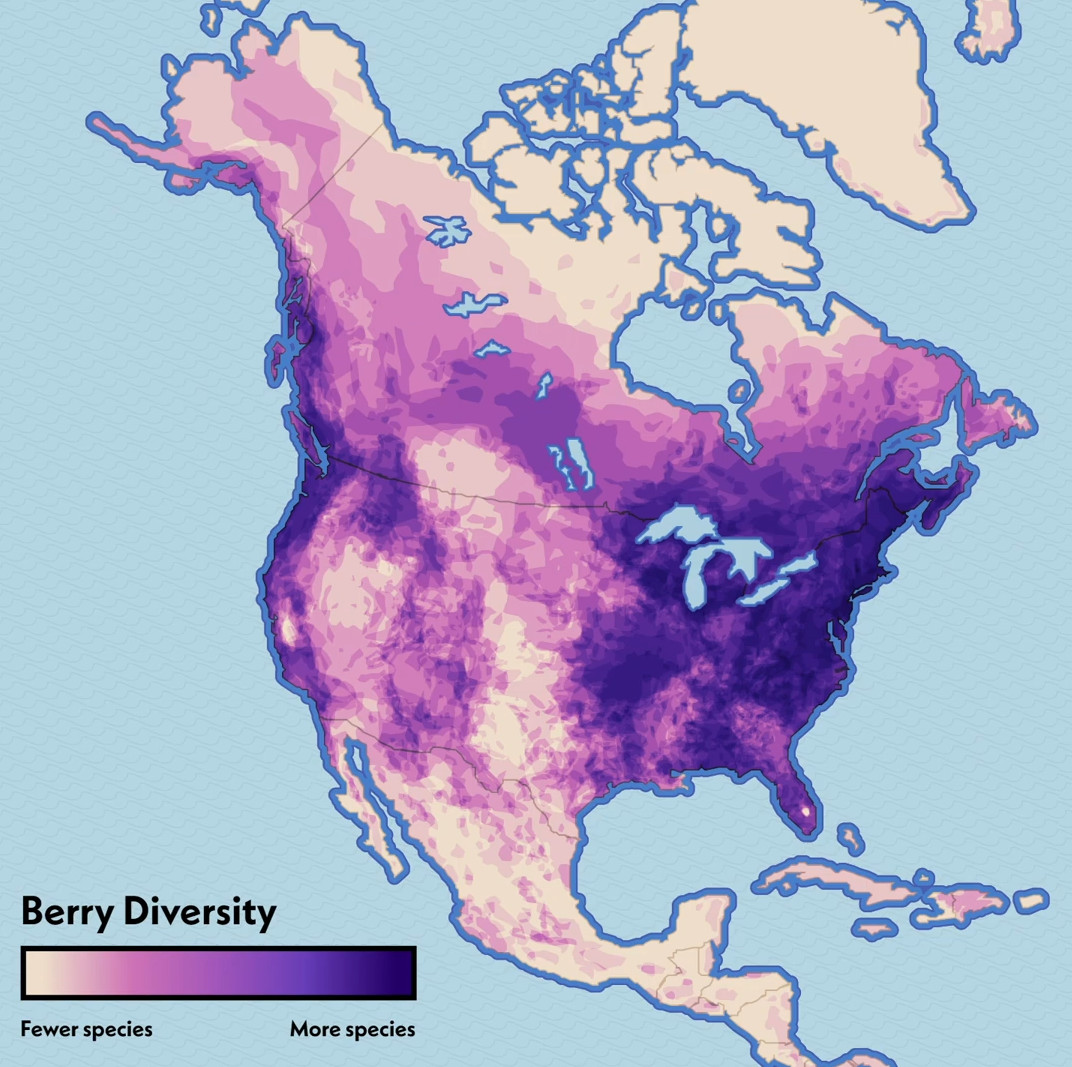

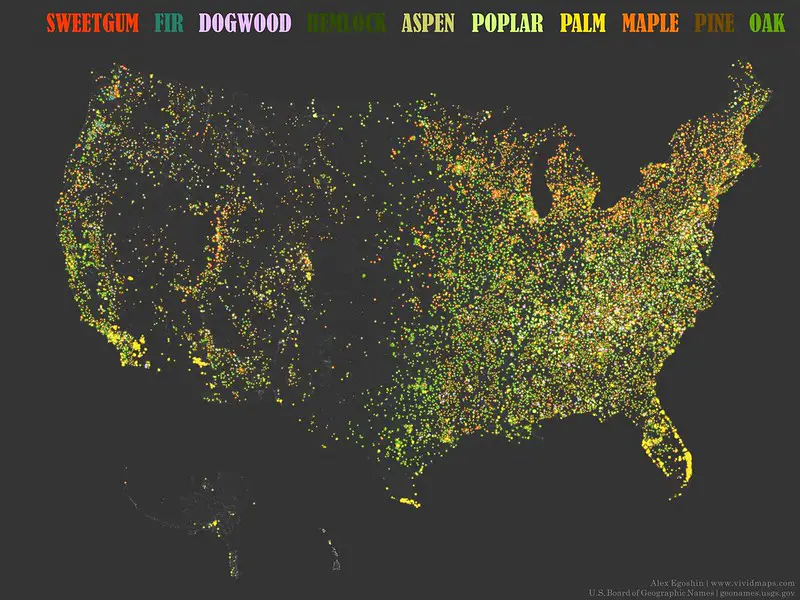

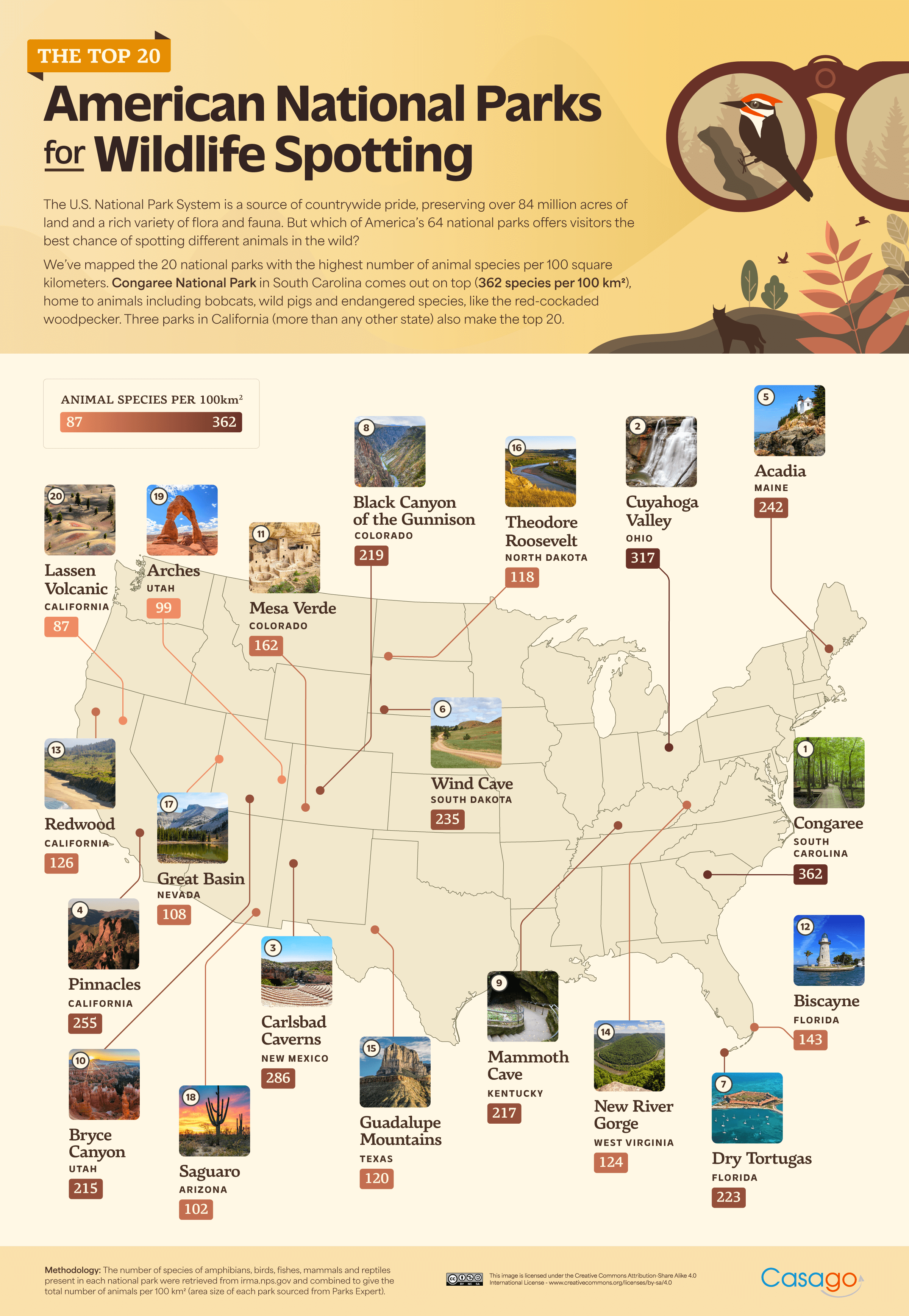

Almost to Tennessee, just a slight increase in temperature…
only a matter of time… any day now…
I love palm trees!
In 1975 or so the environmentalist told us Palm trees were to be in Boston by 1990, that was 32 years ago and they have not moved yet.
If it’s a map of palm trees in the U.S. why didn’t you include Hawaii? Seems like a pretty glaring omission, especially since it accounts for so many.
Why did you leave Hawaii out of a palm tree species density map?
That’s like leaving Florida out of a map of where oranges are grown.
Well this was really supposed to be for the contiguous US not its islands and territories. Not hawaii which literally only has Loulu and coconuts.
Um have your heard of Hawaii?? Palms are everywhere!!